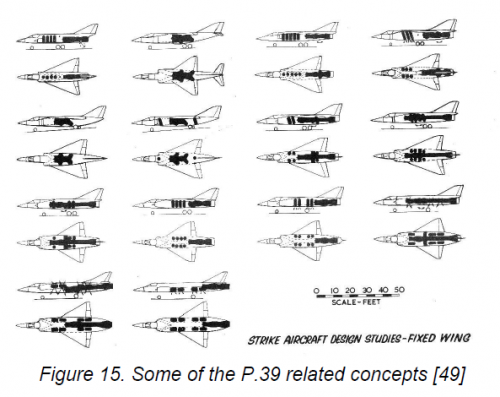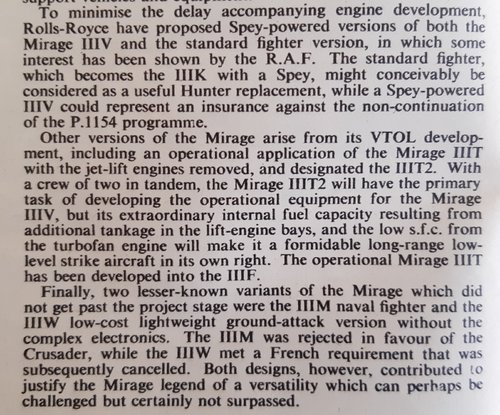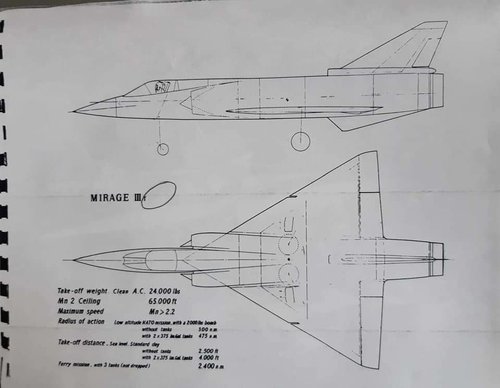- Joined
- 6 September 2006
- Messages
- 4,838
- Reaction score
- 9,478
Having looked at FSP:1 last night I agree with Paul's assessment. The Mirage IIIK is an Atar 9K powered derivative of the III F2 but with smaller dimensions, presumably for export. Who or what it was aimed for is speculation, but it could carry Martel and was a two-seater so it seems to be aimed at the high-end of the market.
Talk about a Spey-powered Mirage III for the UK probably is a mirage! With very scanty, possibly newspaper report origins, I'm sceptical about its existence.
Talk about a Spey-powered Mirage III for the UK probably is a mirage! With very scanty, possibly newspaper report origins, I'm sceptical about its existence.



